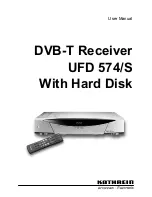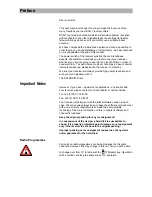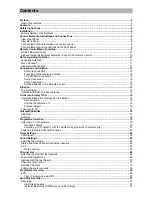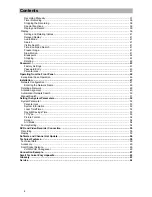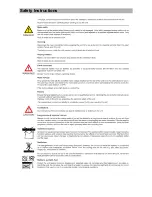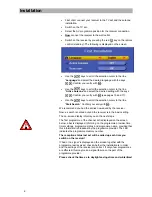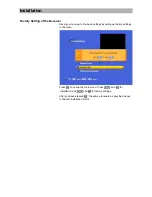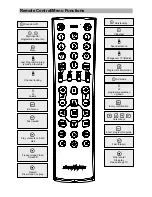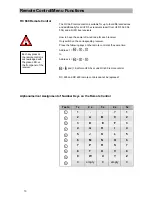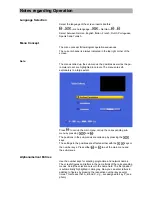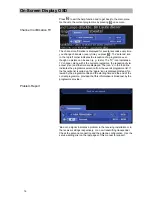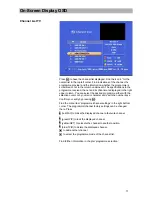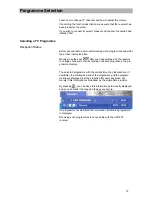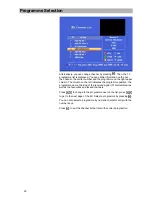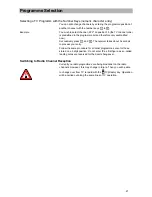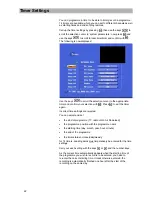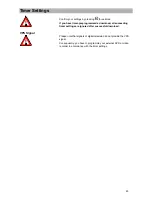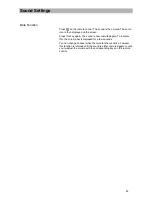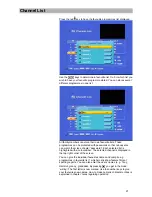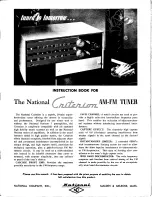
Connection and Initiation
Connection and Initiation
This paragraph is intended for the specialised dealer. You only need
to observe it if you install the receiver yourself.
Find an exemplar configuration in chapter 'connection example'.
Do not connect the receiver to the wall outlet before all installation-
work has been carried out. In this connection, please observe chapter
'safety instructions'.
Antenna Connection
DVB-T has been developed to allow for good TV reception
everywhere an adequate signal can be received. 'Ghosts' are a thing
of the past.
Connect the receiver either to your conventional house distribution or
community antenna net with which you receive all VHF/UHF signals,
or use one of Kathrein's special DVB-T indoor antennae for the
reception of the TV signals direct in your living quarters.
Even DVB-T cannot work wonders – a strong reception signal is
required. Consequently, problems may arise in concrete buildings if
you merely use an ordinary indoor antenna.
Presetting of the receiving Antenna
If you (have to) use an active antenna, i. e. an antenna with pre-
amplifier, you can energise this antenna via the antenna input of the
receiver. 'OFF' is preset to avoid any damage. The use of an antenna
suitable for 5 V supply voltage is imperative (see page 17).
TV/VCR/AUX Connection
Connect the receiver (TV Scart socket) to the TV set with a Scart
cable.
If you have a stereo-TV set, you can receive stereo sound via the
Scart connection.
Use a Scart cable to connect either a video recorder or a DVD
recorder to the VCR/AUX socket.
Audio Connection
For sound reproduction via the HiFi unit, connect the audio Cinch
sockets to the input sockets of the HiFi unit with an appropriate cable.
Dolby Connection
The electrical Dolby-Digital data stream output (AC 3) is solely
provided for connecting a Dolby-Digital unit.
Putting Batteries in the Remote Control
Remove the lid of the battery case on the back side of the remote
control.
Put the batteries enclosed in the remote control. Mind their correct
polarity. It is indicated in the battery case.
Insert the lid in the sliding ledge and slide it on until it snaps in.
Used batteries are hazardous waste!
Never throw out used batteries, as hazardous substances do not
belong in domestic waste!
Turn the batteries in a collecting point for used batteries!
Electronic equipment is
not household waste
- in accordance with
directive 2002/96/EC OF THE EUROPEAN PARLIAMENT AND THE
COUNCIL of 27
th
January 2003 on used electrical and electronic
equipment, it must be disposed of properly.
At the end of its service life, take this unit for disposal at a relevant
of. cial collection point.

